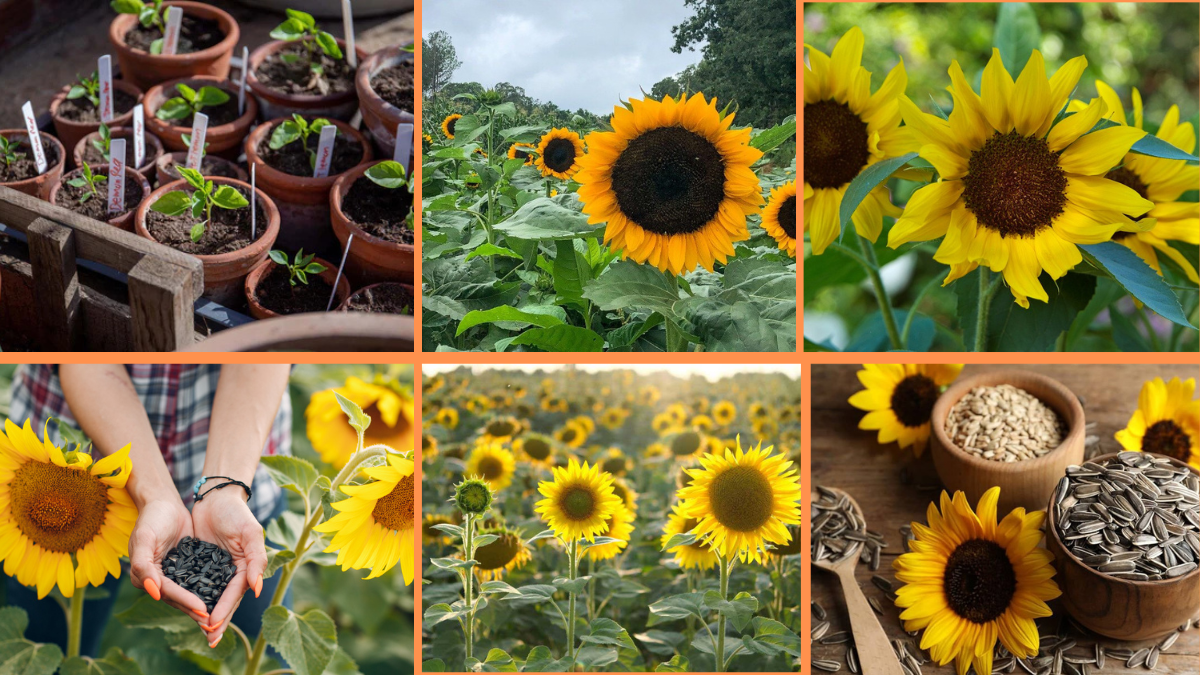Sunflowers are one of the most joyful and iconic flowers you can grow. With their cheerful faces following the sun across the sky and their tall, bold stalks, they instantly brighten any garden. But beyond their beauty, sunflowers are surprisingly easy to grow — making them a perfect plant for beginners, families, and seasoned green thumbs alike.
Whether you dream of a golden field of towering blooms or a sunny patch in your backyard, this comprehensive guide will teach you everything you need to know to start growing sunflowers successfully.

Why Grow Sunflowers?
Before we get our hands dirty, let’s take a moment to appreciate why sunflowers are such a favorite among gardeners:
- Striking beauty: Their large, bright yellow (and sometimes red or orange) faces create instant garden drama.
- Attract pollinators: Bees, butterflies, and birds love sunflowers.
- Edible seeds: Grow your own sunflower seeds for snacking or bird feeding.
- Fast growers: Many varieties bloom in just 70-90 days.
- Natural privacy screen: Tall sunflowers can provide shade or privacy in summer.
Choosing the Right Sunflower Variety
There’s more than one type of sunflower! Choosing the right variety depends on your space, purpose, and aesthetic preferences.
Types of Sunflowers:
| Type | Description | Height |
|---|---|---|
| Mammoth | Classic giant sunflowers with huge heads and edible seeds | 8-12 feet |
| Autumn Beauty | Rich red, orange, and gold hues | 5-7 feet |
| Teddy Bear | Fluffy, double blooms perfect for containers | 2-3 feet |
| Sunspot | Dwarf variety ideal for small gardens | 2-3 feet |
| Velvet Queen | Deep burgundy-red flowers | 5-6 feet |
Tip:
Pick a mix of tall and dwarf varieties for visual interest and continuous blooming.
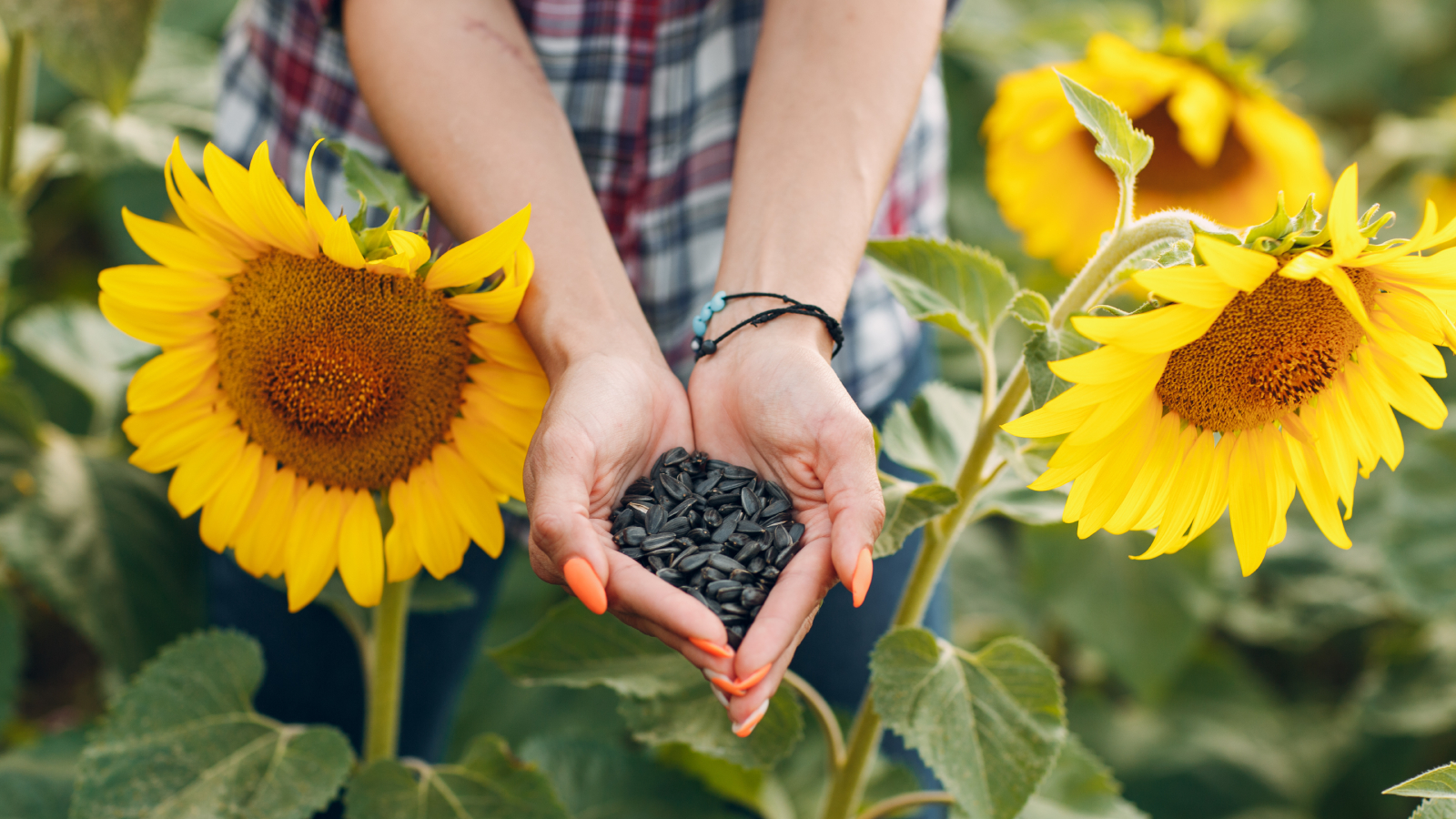
When and Where to Plant Sunflowers
Sunflowers love warmth and sunlight — as their name suggests. Getting the timing and location right ensures vigorous growth and healthy blooms.
When to Plant:
- After the last frost date in spring.
- Soil temperature should be at least 55°F (13°C) for optimal germination.
Best Growing Conditions:
- Full Sun: At least 6-8 hours of direct sunlight daily.
- Well-Draining Soil: Loose, fertile soil with a pH between 6.0 and 7.5.
- Sheltered from strong winds: Tall sunflowers can topple without support or protection.
How to Prepare the Soil
Healthy soil = happy sunflowers.
Soil Prep Steps:
- Loosen the soil to a depth of 12-15 inches.
- Mix in organic compost or aged manure to enrich the soil.
- Remove weeds and stones to give the roots room to spread.
- For heavy clay soils, add sand or perlite for better drainage.
Bonus Tip:
Sunflowers are heavy feeders — consider adding a balanced slow-release fertilizer during soil prep.
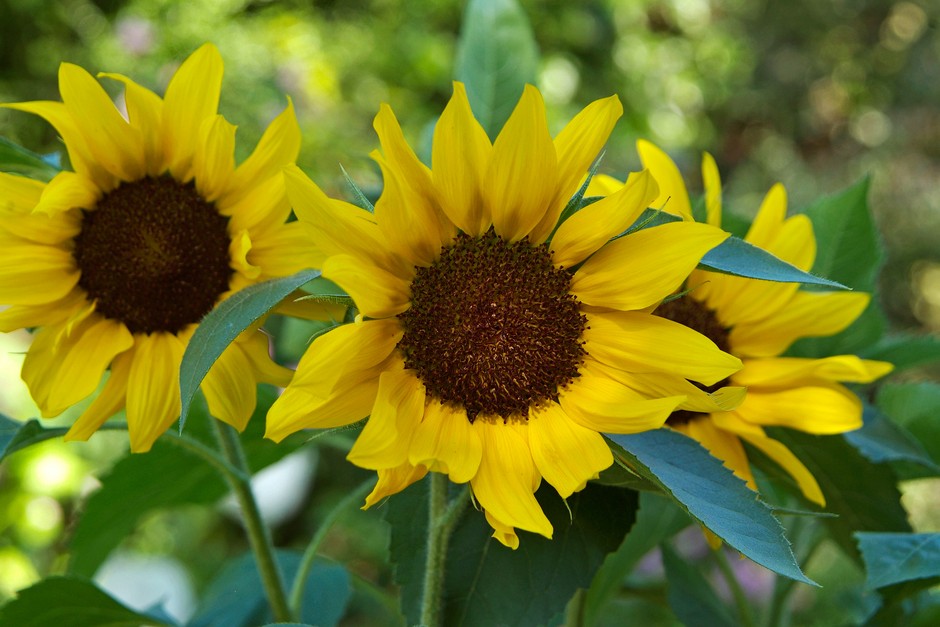
Planting Sunflower Seeds
Sunflowers grow best when directly sown into the ground — they don’t love being transplanted.
How to Plant:
- Sow seeds 1-1.5 inches deep.
- Space seeds 6-12 inches apart for small varieties and 18-24 inches apart for giants.
- Cover lightly with soil and water gently.
Tip:
For continuous blooms, plant a second round of seeds every 2-3 weeks until mid-summer.
Caring for Your Sunflowers
Once planted, sunflowers are relatively low-maintenance — but a few simple care practices will help them thrive.
Watering:
- Water deeply but infrequently to encourage strong root systems.
- Keep soil moist (not soggy) during germination and early growth.
- Mature sunflowers need 1 inch of water per week.
Feeding:
- Add a light dose of balanced fertilizer (like 10-10-10) when plants are about 1-2 feet tall.
- Avoid over-fertilizing, as it can cause floppy stems.
Supporting Tall Varieties:
- Use stakes or trellises to support large sunflowers, especially in windy areas.
- Tie stems loosely with soft ties to prevent damage.
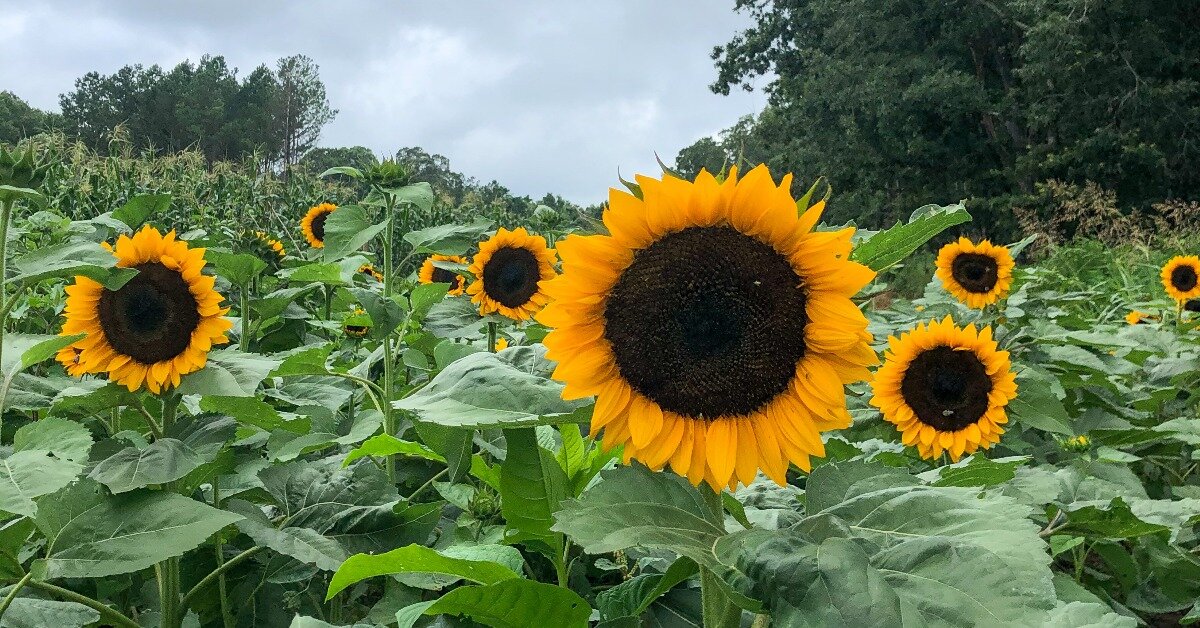
Common Pests and Problems (And How to Handle Them)
Even tough sunflowers can occasionally face pests or diseases. Here’s what to watch out for:
Pests:
- Aphids: Spray with a gentle stream of water or neem oil.
- Cutworms: Protect young seedlings with paper collars.
- Birds and squirrels: Cover seed heads with mesh or netting.
Diseases:
- Powdery Mildew: Improve air circulation and avoid overhead watering.
- Rust or fungal spots: Remove affected leaves and treat with fungicide if needed.
Pro Tip:
Healthy, well-spaced sunflowers with good air circulation are naturally more resistant to problems.
Harvesting Sunflowers
Depending on your purpose — for cut flowers, seeds, or decor — timing the harvest is key.
For Cut Flowers:
- Cut blooms early in the morning when petals are just beginning to open.
- Use sharp, clean shears and place stems immediately in cool water.
For Seeds:
- Wait until the back of the flower head turns yellow-brown and the seeds are plump.
- Cut the head off with about 12 inches of stem.
- Hang upside down in a dry, ventilated area with a paper bag over the head to catch seeds.

Growing Sunflowers in Containers
Yes — you can grow sunflowers in pots! Dwarf and compact varieties are ideal for patios, balconies, and small spaces.
Container Tips:
- Use a large pot (at least 12-16 inches deep).
- Fill with well-draining potting mix enriched with compost.
- Water regularly — containers dry out faster than garden beds.
- Stake taller varieties even in pots.
Fun Sunflower Facts
- Heliotropism: Young sunflowers track the sun’s movement across the sky — a phenomenon called heliotropism.
- Edible Uses: Beyond seeds, sunflower petals can be used in salads, and the unopened buds can be steamed like artichokes.
- Historical Symbolism: Sunflowers symbolize adoration, loyalty, and longevity.
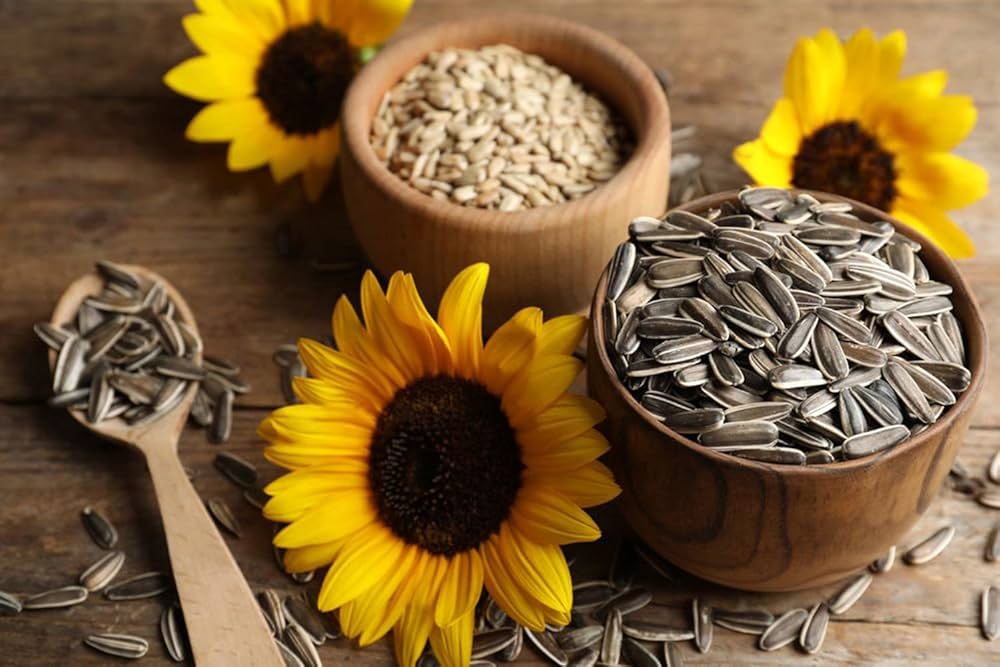
Final Thoughts
Sunflowers are one of the easiest and most rewarding plants you can grow — whether you’re a beginner, a home gardener, or a parent wanting a fun garden project with the kids. Their towering stalks, sunny blooms, and seed harvest make them a garden superstar.
With just a little care and sunshine, you’ll soon be surrounded by your very own patch of golden, smiling sunflowers.
So grab those seeds, find a sunny spot, and let your sunflower-growing adventure begin!
